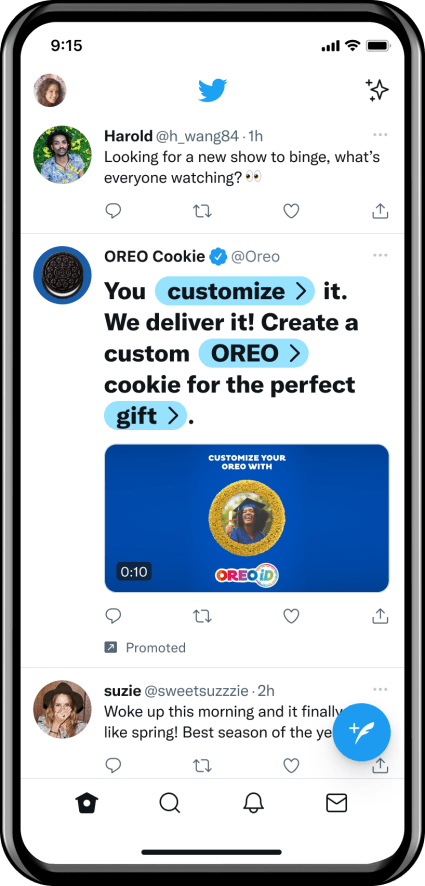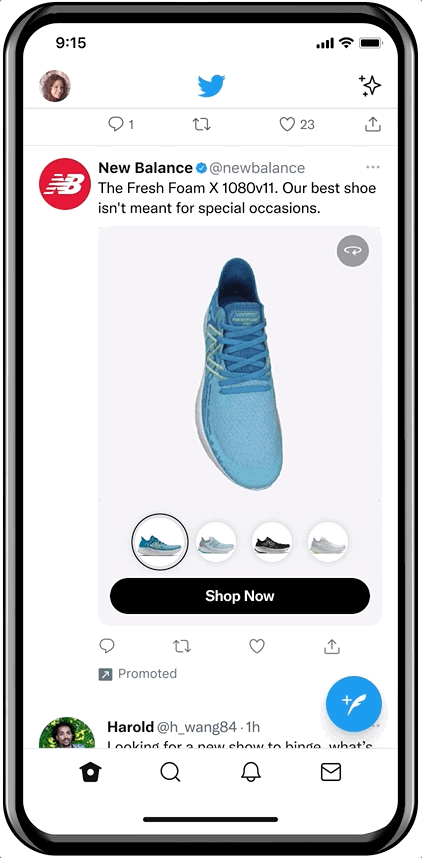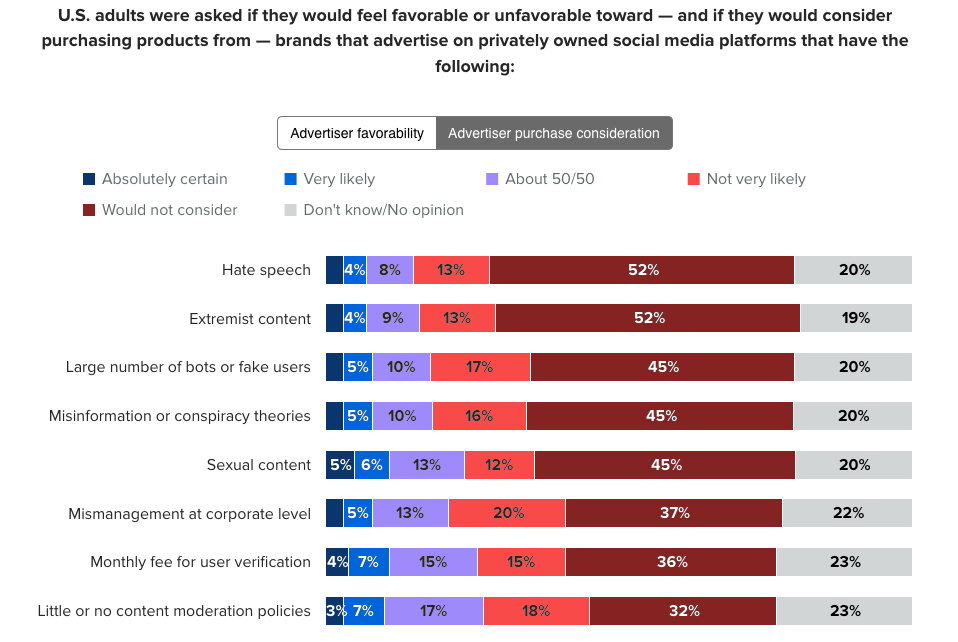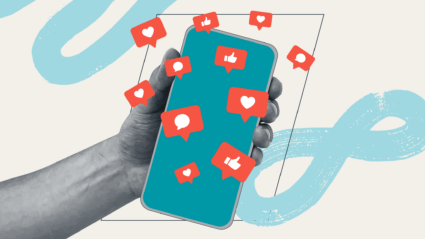When people found out Elon Musk might buy Twitter, reactions from advertisers were mixed: some were excited about a new direction for the ad offerings from the platform, which traditionally lagged behind other social media mainstays, especially Meta. Others were worried about potential threats to brand safety if Musk made his vision for Twitter as a bastion for unlimited free speech a reality.
Even most of the naysayers did not foresee the level of chaos and instability that rained down on the beleaguered platform once Elon was actually behind the wheel. As massive layoffs and questionable choices abounded, any excitement turned to deep concern, and brands started departing in droves.
But… just recently, some advertisers on Twitter spotted a glimmer of hope, though you wouldn’t know it from the trade headlines. And they are hoping that a sort of period of regrowth after the recent forest fire might just be possible.
That hope flows from a convergence of factors: as more brands left the platform, ads on Twitter got much cheaper. On a more surprising note, Twitter has also been shipping some interesting new ad product offerings for brands—at a faster rate.
Twitter in its current state still is not a fit for every brand. The brand safety problems are very real, and the headaches around dupes and other issues associated with Twitter’s new verification process aren’t going to be fully resolved any time soon.
But if your brand is up for a challenge and ready to take advantage of a real bargain, now is the time. Yes, there’s a lot of potential upside for brands, but we also don’t know how long the opportunity will last.
The competition void: Twitter advertisers are getting a huge deal on ad space
Auction-based ad systems like Twitter are based on competition. You plug in whatever targeting you want to use for a campaign and the various campaign types or bid models available will dictate how much it will cost to reach that specific audience. When so many brands pulled their ads from Twitter, a lot of competition disappeared in a whiff of smoke.
CPMs are now averaging about $2.50.
Twitter knows it’s in trouble with advertisers. For all of Musk’s bluster on his own account, Twitter has been offering massive discounts to entice advertisers to come back or appeal to businesses who are new to the platform.
And they aren’t messing around when it comes to sweetening the deal.
In Q1 2023, Twitter offered a 1:1 match for up to $250k to advertisers who were either new to the platform or hadn’t run a campaign in the last six months. Let’s be crystal clear on how big a deal this is: if you invested $60K into Twitter ads, Twitter would give you another $60K in ad credits, resulting in $120K of available ad delivery. The only distinction is that it had to be applied to Twitter’s direct response ad products.
In Q2, the incentives continued. The platform offered a 50% rebate (match up to $125k) to advertisers. So if you spend $10K, you would get a $5K credit from Twitter. That’s still a damn good deal.
The combined effect is to make it much harder to argue that the price is not right, even with the fears for brand safety. But lower pricing isn’t the only incentive.
The platform capabilities: Twitter accelerates and expands its ad offerings
Against all odds, Twitter is shipping product faster these days. Historically, they had a ballpark of 1-2 ad innovations a quarter; this year, they’ve been shipping new ad products at a much more rapid clip, every couple of weeks.
In terms of ad innovation, the old Twitter had always lagged far behind established contemporaries like Facebook and more recent platforms like TikTok. But in recent weeks, Twitter appears to be trying to close that gap more aggressively, rolling out dynamic, shoppable, and search intent-based capabilities.
We’ve tested these new ad types, and they show real potential. Here is a couple to consider as you’re evaluating whether or not Twitter is a viable option for your ad dollars:
Interactive Text Ads let you grab attention in the feed and connect highlighted words in your ad to specific landing pages, so you can drive more traffic to a campaign-specific conversion-optimized page on your own site. The platform promises a more engaging ad experience for users and a more customizable one for advertisers.

Source: Twitter
Twitter explains that “these ads will appear with a larger, bolder typeface than the standard Twitter font in the timeline. Advertisers can highlight up to three words in their ad copy that, when clicked, will drive consumers to landing pages chosen by the brand. Brands can also choose from 10 highlight colors.”
Product Explorer Ads are still in the testing phase, but they let brands show off their products in 3D (for the first time on Twitter) within a promoted tweet. These ads offer a user experience similar to what someone might interact with on a retail site. Twitter notes that people “will be able to swipe and rotate a brand’s products to see them from different angles. When they’re ready to learn more or purchase the products displayed, consumers can click directly on the ad’s shop button and go to the advertiser’s website.”

Source: Twitter
To be clear, the overall Twitter ad platform is still behind its peers set, but Twitter appears to be working hard to level up its offerings as quickly as possible. And at those low prices, it may be worth testing into for your business.
The challenges: this is still Elon Musk’s Twitter
Even if all of that sounds pretty good, we’d be remiss not to address the Elon-ephant in the room. Twitter as a platform is still very volatile, for both users and advertisers.
Brand safety is still a major concern. One of the biggest reasons advertisers decreased or stopped spending on Twitter is because Twitter’s brand safety team was unceremoniously dissolved early on in Musk’s run.
Inappropriate content and bad actors are present on the platform, and, without brand safety mechanisms in place, Twitter can’t totally guarantee your ads won’t appear around problematic content.
Twitter is trying to address safety concerns by partnering with brands like DoubleVerify and IAS and labeling adult images as sensitive content, but there’s still a lot of work to be done.
The changes to Twitter’s verification system are probably the best-known mess of Musk’s making. Different-colored checkmarks, changing definitions of what each means, and paying verified users who are free to impersonate people, brands, and government agencies have all added to the chaos.
Twitter is also reportedly requiring advertisers to pay for verification if they want to run ads unless they spend $1,000 a month. Then they get an automatic gold verification badge.
With all of this still in flux, Twitter is still a high-risk platform for advertisers. You need to weigh the opportunities against the risks to determine if your brand is hardy enough to try it on for size. Morning Consult reported that 52% of U.S. adults said the presence of hate speech on a social media platform would make them feel “very unfavorable” toward advertisers that run promotions on it. But what people say and what they do can be two very different things.

Source: Morning Consult
If your audience is on Twitter and it makes sense for your brand, you should absolutely take advantage of the beneficial pricing and new capabilities. But proceed with caution: pay close attention to both performance and any declines in brand sentiment that might be related to advertising on the platform.







Responses